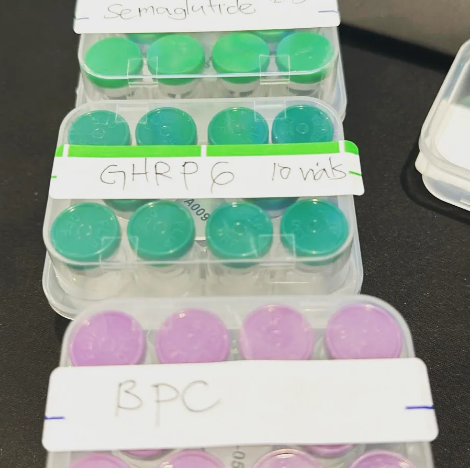
News
Mar . 19, 2024 16:17 Back to list
Anabolic steroids are drugs that help the growth and repair of muscle tissue.
Anabolic steroids are drugs that help the growth and repair of muscle tissue. They are synthetic hormones that imitate male sex hormones, specifically testosterone.1
Anabolic steroids have some legitimate medical uses, including for treating hormonal issues in puberty, and to treat muscle loss caused by other diseases such as cancer and AIDS.2
Some people use anabolic steroids for non-medical purposes, including to increase lean muscle mass and build strength and endurance. This only works if used in conjunction with certain exercise and diet regimes.3 Steroids can also help people reduce fat and recover quicker from injury.3 Anabolic steroids are classed as performance and image enhancing drugs (PIEDs). These substances are taken by people with the intention of improving their physical appearance or enhancing their sporting performance.
Corticosteroids are a class of drug used to treat inflammatory arthritis and other inflammatory conditions such as asthma. They are commonly referred to as 'steroids', and people often believe them to be the same thing as anabolic steroids. It should be noted that these are different substances that act on different parts of the body.4
What do anabolic steroids look like?
Anabolic steroids usually come in a pill or tablet form, but can also come as a liquid, gel or cream.2, 3
How are they used?
Anabolic steroids can be injected, swallowed or applied to the skin (if it’s a gel or cream).2, 3
Other names
Roids, gear, juice, stackers, gym candy, arnolds, pumpers, weight trainers, weight gainers
Who uses anabolic steroids and why?
A study completed by the National Drug and Alcohol Research Centre found the following people use anabolic steroids:5
- Competitive athletes – who are motivated by their desire to succeed.
- People concerned about their body image – recreational weight trainers and body builders and people working in the fashion and entertainment industries.
- Body building professionals – people involved in body building as a competitive sport.
- People who need muscle strength to do their job – bodyguards, security personal, construction workers, police and members of the armed services.
- Young men – who want to increase their athletic performance or who are striving to reach the same physical appearance that is often portrayed in the media.5
And typically, it is males in their mid to late 30’s who use anabolic steroids the most (non-medically).6
How do they work?
Anabolic steroids work by imitating the properties of naturally occurring hormones.3 They have a similar chemical composition to testosterone and are therefore able to activate our testosterone receptors. Once the receptors are stimulated, a domino effect of metabolic reactions takes place as the drug instructs the body to increase muscle tissue production.3
There are different ways for people to use anabolic steroids non-medically. This can include three different methods, including:
- Cycling – periods of using steroids followed by an equal period of not using.
- Pyramiding – periods of using steroids where the amount is gradually increased to a peak, and then tapered back down again.
- Stacking – where different steroids are used at the same time. This can often follow a cycling approach.3
Side effects
There is no safe level of drug use. Use of any drug always carries some risk. It’s important to be careful when taking any type of drug.
The evidence around whether anabolic steroids can significantly improve athletic performance is limited.7 But generally speaking, there has been some research which has shown that people who use anabolic steroids will experience an increase in muscle strength.8
Some people may use anabolic steroids and believe it to be part of a healthy lifestyle. They may not see themselves as injecting drug users. However, there are risks associated with using steroids without a prescription or medical supervision – even as part of a fitness training program.
In the worst case, long-term heavy steroid use can lead to heart attack, stroke and death9, especially among men aged in their early 30s who combine steroids with stimulant drugs, such as speed and ecstasy.3, 10, 11
Anabolic steroids affect everyone differently. The following may be experienced:
- water retention – leading to facial bloating
- acne – leading to permanent scarring
- irritability and mood swings
- more frequent colds
- aggression and violence
- increased sex drive
- sleeping difficulties.3, 12, 13
Long-term effects
Regular use of anabolic steroids may eventually cause:
- liver damage
- kidney or prostate cancer
- high blood pressure
- depression
- cardiovascular complications
- tendon/ ligament damage.3, 13
Men
Effects include:
- reduced sperm count and fertility
- shrunken testicles
- baldness
- gynaecomastia (developing breasts)
- involuntarily and long-lasting erection.3, 13
Women
Effects include:
- facial hair growth
- irregular periods
- deepened voice
- smaller breasts
- enlarged clitoris.3, 13
Pregnant women who use steroids are at risk of harming their unborn baby. To be safe, steroid use should be stopped at least 4 months before falling pregnant, as well as during pregnancy.14, 15
Young people
Young men are more likely than young women to use steroids to gain weight and muscle mass.16
The risks of certain side effects are higher if steroids are injected by young men in their late teens/ early 20s, before they have stopped growing. For example:
- stunted growth
- premature balding
- acne scarring
- stretch marks on chest and arms
- prematurely-aged, ‘leathery’ skin
- injuries from excessively intense gym workouts.13, 17
Injecting risks
Injecting in unhygienic environments or sharing equipment with others increases the risk of contracting blood borne viruses such as HIV/AIDS, tetanus or Hepatitis C or B.3
Injecting can also cause abscesses (pus pockets) and blood clots if the technique is incorrect or repeated injections are used on the same area.3
Anabolic steroids and mental health
Research demonstrates a relationship between people who use anabolic steroids and increased mental health issues.
Anabolic steroid users are more likely than non-users to report anxiety, and some users have been known to develop hypomania, manic or psychotic symptoms during exposure to anabolic steroids.18, 19
Many users have also reported major depressive symptoms and sleep disorders – particularly during periods of abstinence after intense use.18, 19
Tolerance and Dependence
Anabolic steroids do not cause physical dependence, but people can find themselves relying on them to build confidence and self-esteem.20 This reliance can make it difficult to stop using them in the longer term. Fear of losing muscle size or definition can lead to internal pressure to continue use.12
Withdrawal
The following symptoms may be experienced after completing an anabolic steroid cycle:
- extreme tiredness
- weight loss due to decreased appetite
- decreased strength
- depression.21
It can take up to four months to restore the body’s natural testosterone levels (if taking high doses for an extended period of time).22
Health and safety
Steroids should only be injected with a prescription for a specific medical reason or under medical supervision. However, for people who do decide to use anabolic steroids for non-medical purposes, it’s important to remember that:
- Injecting more than the recommended dose does not create larger muscles – the muscle simply becomes saturated. Higher doses only raise the risks of worse side effects without providing any extra benefits.23
- It is not necessary to inject directly into specific muscles as the steroids are transported to all muscle groups via the bloodstream.24
There are also many steps that can be taken to reduce the risk of harm caused by long-term steroid use. These include:
- using lower doses to reduce the risk of side effects
- never injecting anabolic steroids directly into biceps, calf muscles or pectorals, to avoid causing permanent nerve damage
- avoiding repeatedly injecting steroids into the same area of the body
- limiting cycles to 8 to 10 weeks to rest the kidneys, liver and endocrine system
- avoiding sharing injecting equipment with others to reduce the risk of contracting a blood-borne virus such as HIV or Hepatitis C
- using a needle from an unopened package with every injection
- avoiding combining steroids with diuretics such as caffeine, alcohol and other drugs like amphetamines (such as ice and speed)
- injecting anabolic steroids in a sterile location.23, 24
Getting Help
If your use of anabolic steroids is affecting your health, family, relationships, work, school, financial or other life situations, or you’re concerned about a loved one, you can find help and support.
Call the National Alcohol and Other Drug Hotline on 1800 250 015 for free and confidential advice, information and counselling about alcohol and other drugs
Help and Support Services search
Find a service in your local area from our list. Simply add your location or postcode and filter by service type to quickly discover help near you.
-
Using tadalafil to promote hair growth and combat hair loss effectively.
NewsJul.10,2024
-
Generating a title similar to palmitoyl oligopeptide could be Oligopeptide containing palmitoyl for skincare benefits and rejuvenation.
NewsJul.10,2024
-
Similarity of the compound tra% 100mg/ml in different pharmaceutical formulations
NewsJul.10,2024
-
Negative impacts of tadalafil on health and well-being
NewsJul.10,2024
-
Anastrozole 0.5 mg twice per week for treatment of cancer patients
NewsJul.10,2024
-
Reviewing the effectiveness of kisspeptin in enhancing reproductive health and fertility.
NewsJul.10,2024

